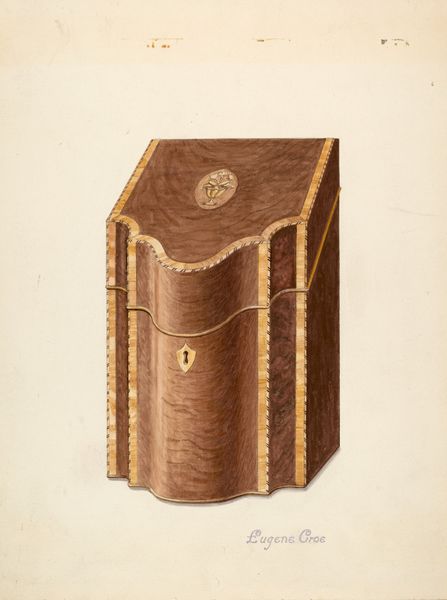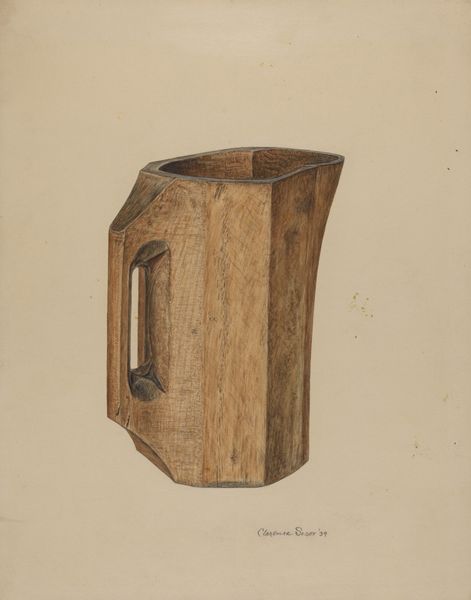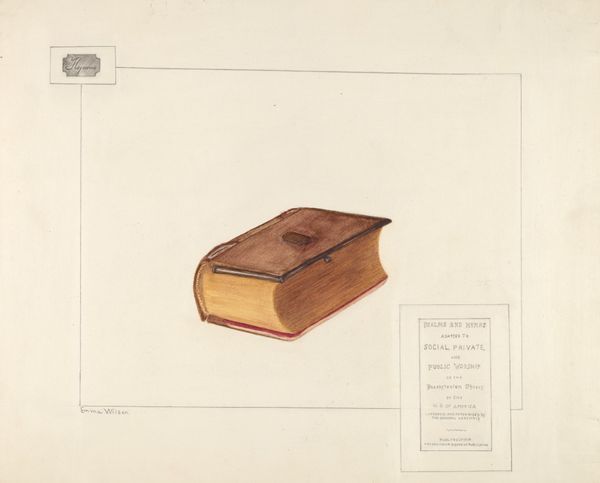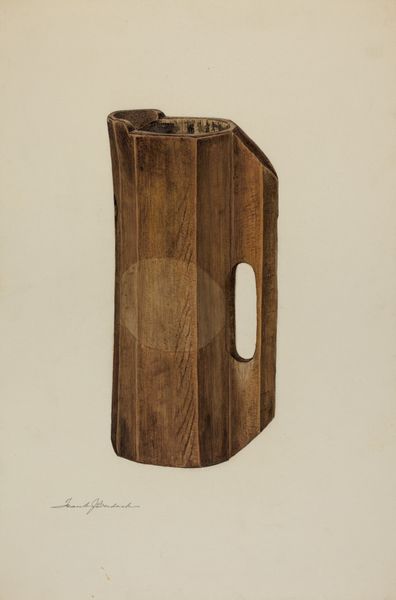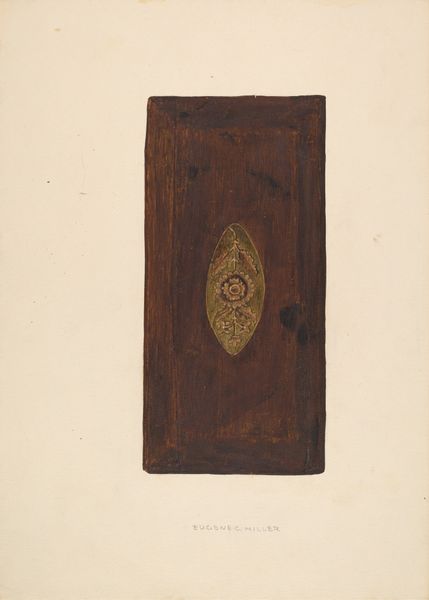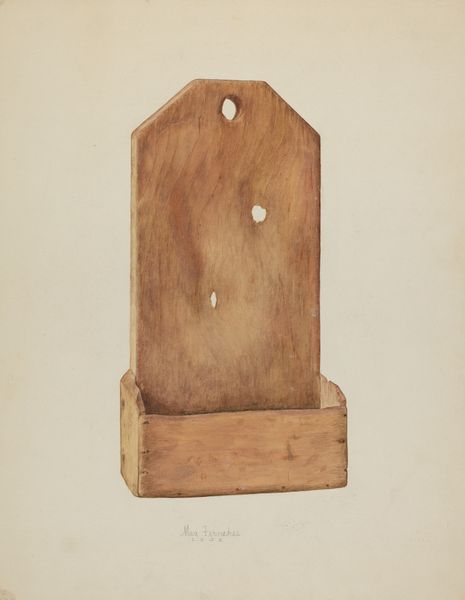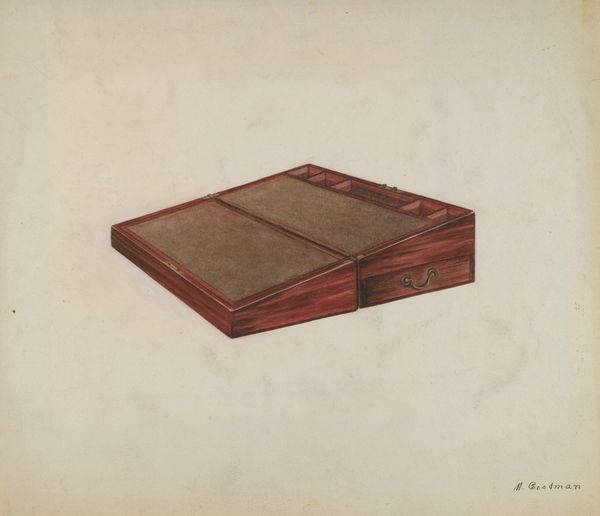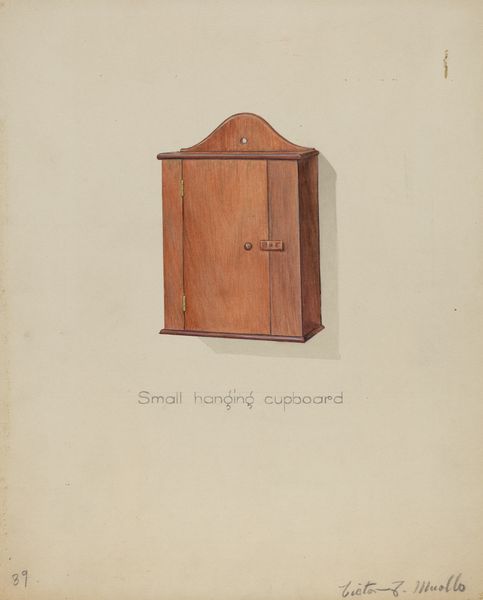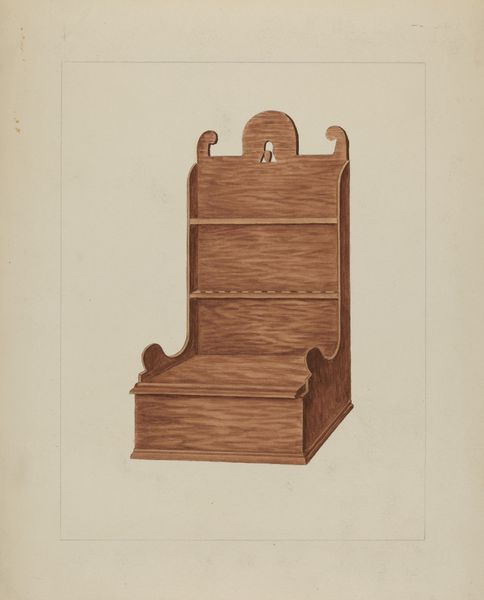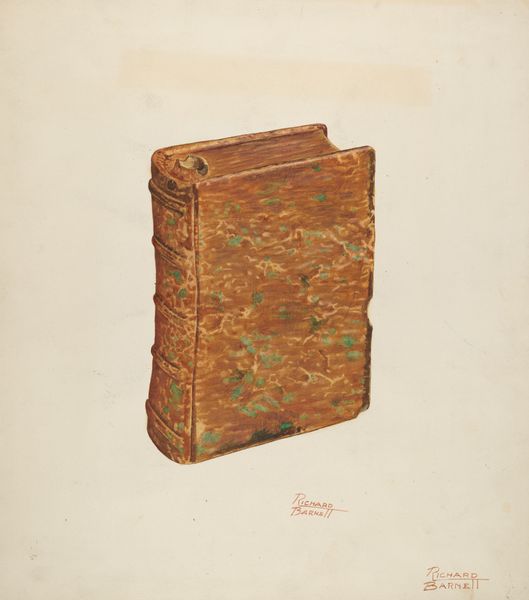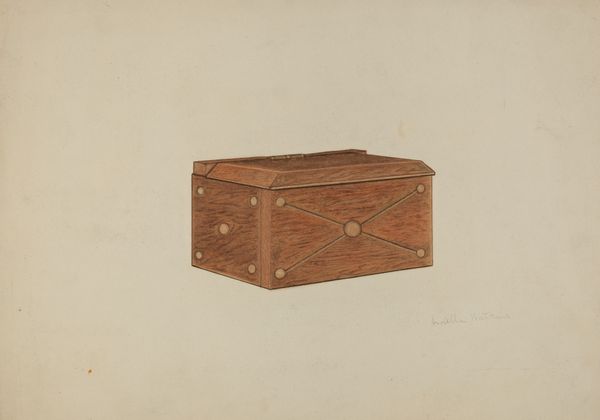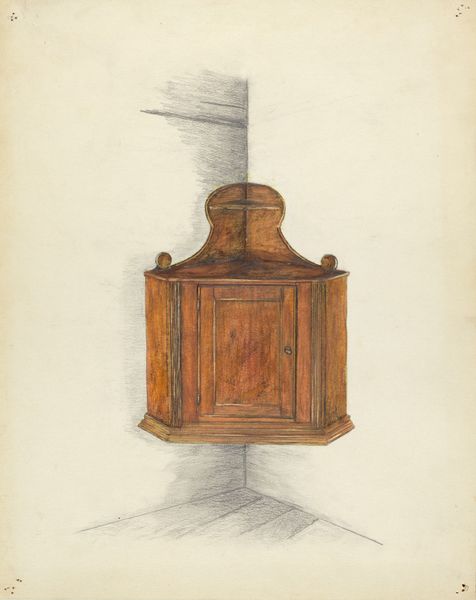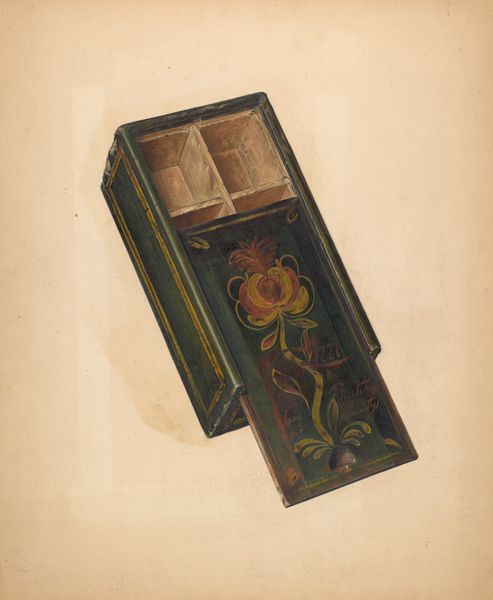
drawing, paper, pencil
#
drawing
#
paper
#
pencil drawing
#
pencil
#
realism
Dimensions: overall: 45.4 x 36.3 cm (17 7/8 x 14 5/16 in.) Original IAD Object: back: 14 3/4" high; front: 9 1/2" high; 8 1/4" wide; 7 1/2" deep
Copyright: National Gallery of Art: CC0 1.0
Curator: What a curious piece! Harry Eisman created this drawing, titled "Knife Box," around 1940. The medium seems to be pencil on paper. What strikes you most about it? Editor: It's incredibly precise! And slightly… oppressive. There's a weight to this object, rendered so realistically with careful shading. One wonders about the specific kind of labor linked with woodworking, furniture making, as opposed to working with precious materials like silver or gold? Curator: Indeed! Eisman's attention to detail elevates what would otherwise be a functional item, forcing us to consider the processes behind its creation, doesn't it? What sort of access to materials, for example, allowed the making of something so ordinary and overlooked? Editor: Absolutely! I am wondering also about the intended social purpose of something like a knife box. Who possessed this sort of domestic object? Was this a typical home belonging to men, or to women? In any case, what sorts of power dynamics or hierarchical gender associations did this artwork project within domesticity? And the box is locked - who has access to the knife in this situation? Curator: That is fascinating to consider. The very concept of a "knife box" implies a deliberate containment. What anxieties about access to tools might have been prevalent when this drawing was conceived? Looking closely, notice how the texture of the wood grain and even the meticulous stitching along the edges of the panels become focal points in this pencil-on-paper piece. Editor: Containment definitely figures into this, suggesting all sorts of control anxieties within, I am betting, an unequal society. Did the artist intend to subvert conventional representation by valorizing utilitarian design, challenging established concepts that considered "high" art to be distinct from quotidian objects like this one? The craftsmanship elevates what is inherently violent – a knife! – to something decorative and contained. The artist might have been concerned by class issues related to those items. Curator: That might very well have been the case. Viewing it through the lens of production and function, what might it signify for you, looking at this drawing right now? Editor: Thanks to that perspective, the artwork strikes me with its historical pertinence concerning the distribution of domestic power relations. But your understanding encourages me also to think critically about that. A truly great intersection of thought! Curator: Thank you! I have come to appreciate this humble "Knife Box" on a new plane as well.
Comments
No comments
Be the first to comment and join the conversation on the ultimate creative platform.
